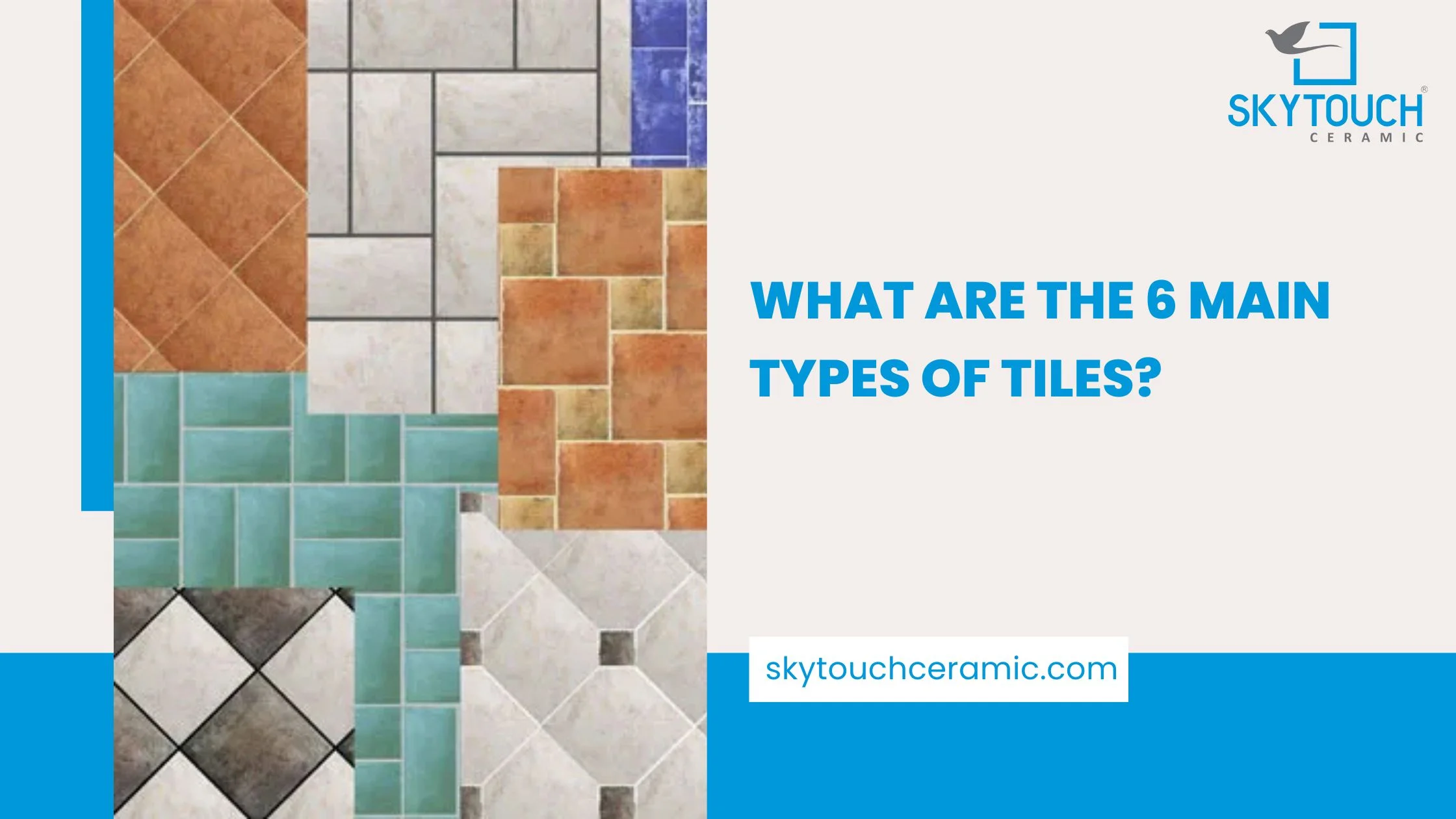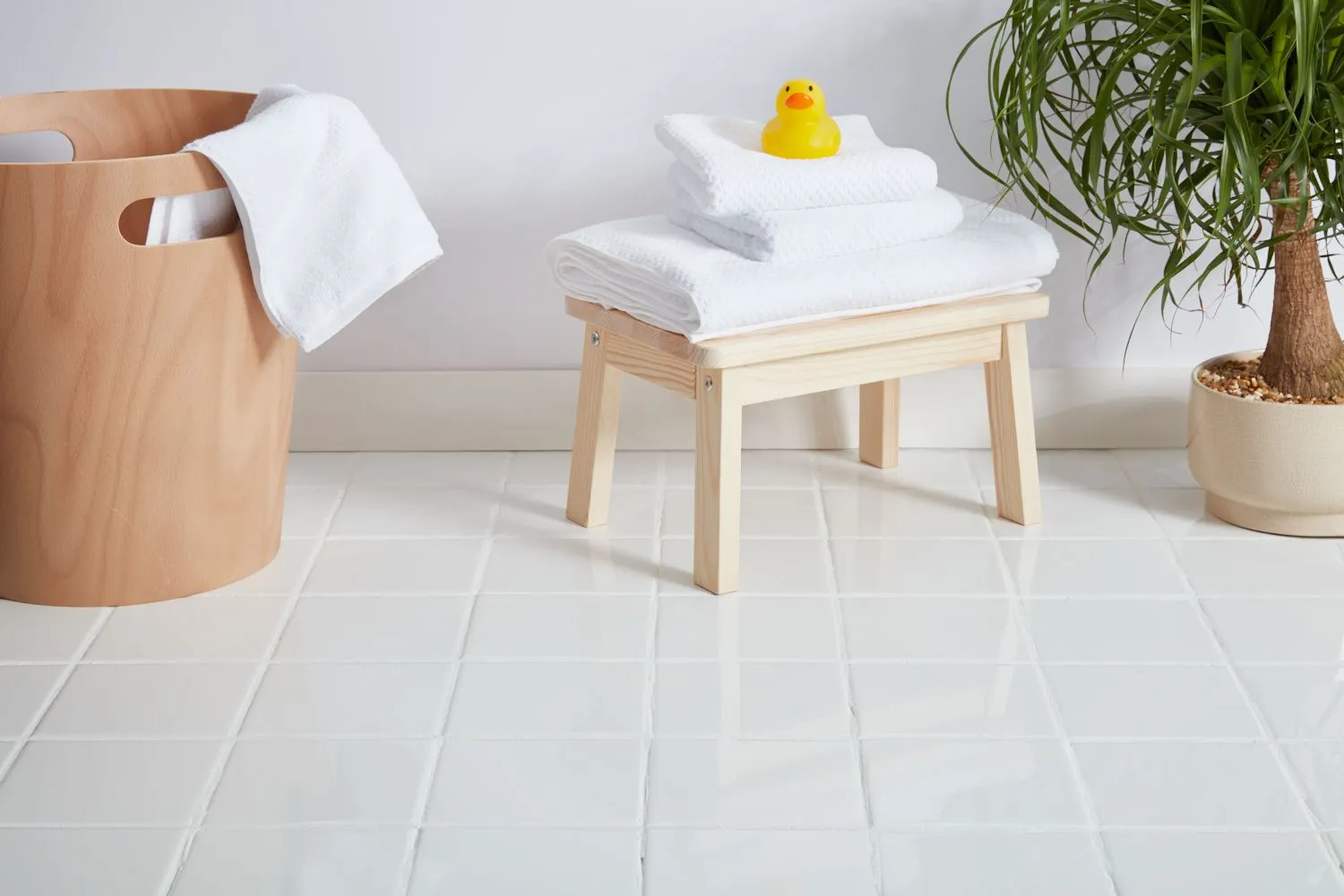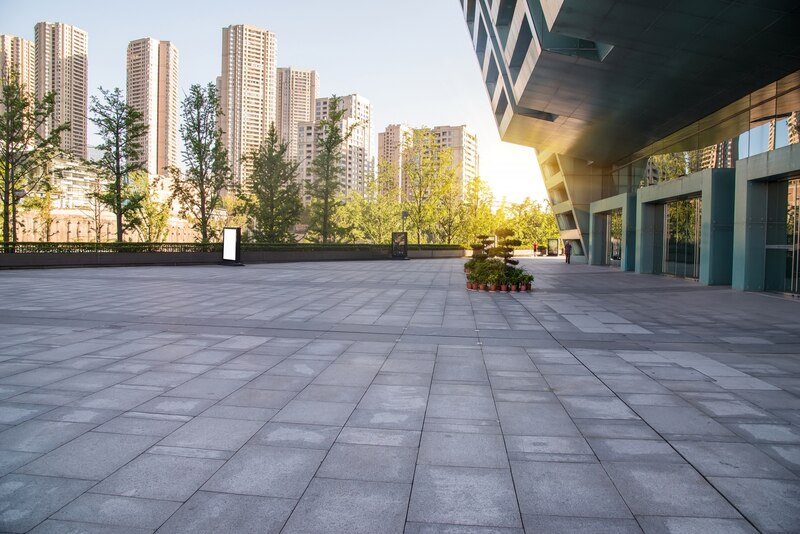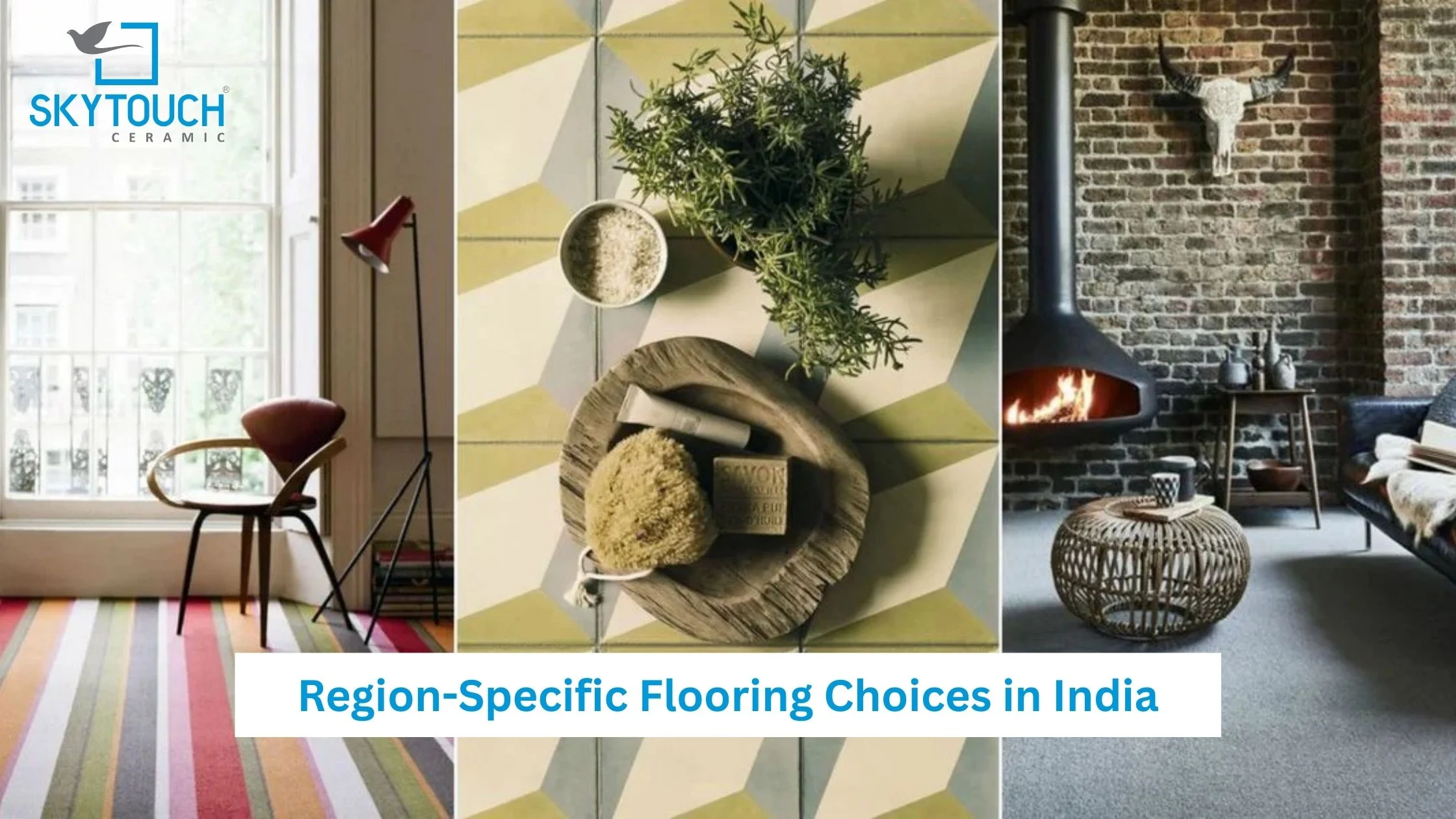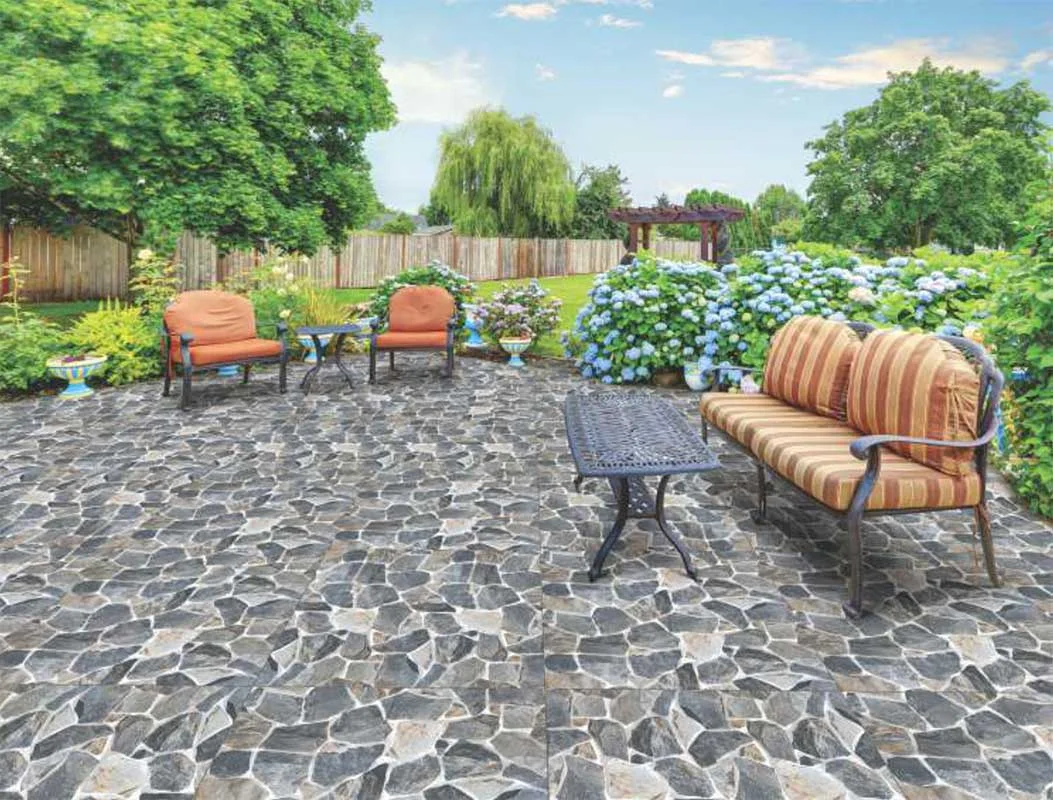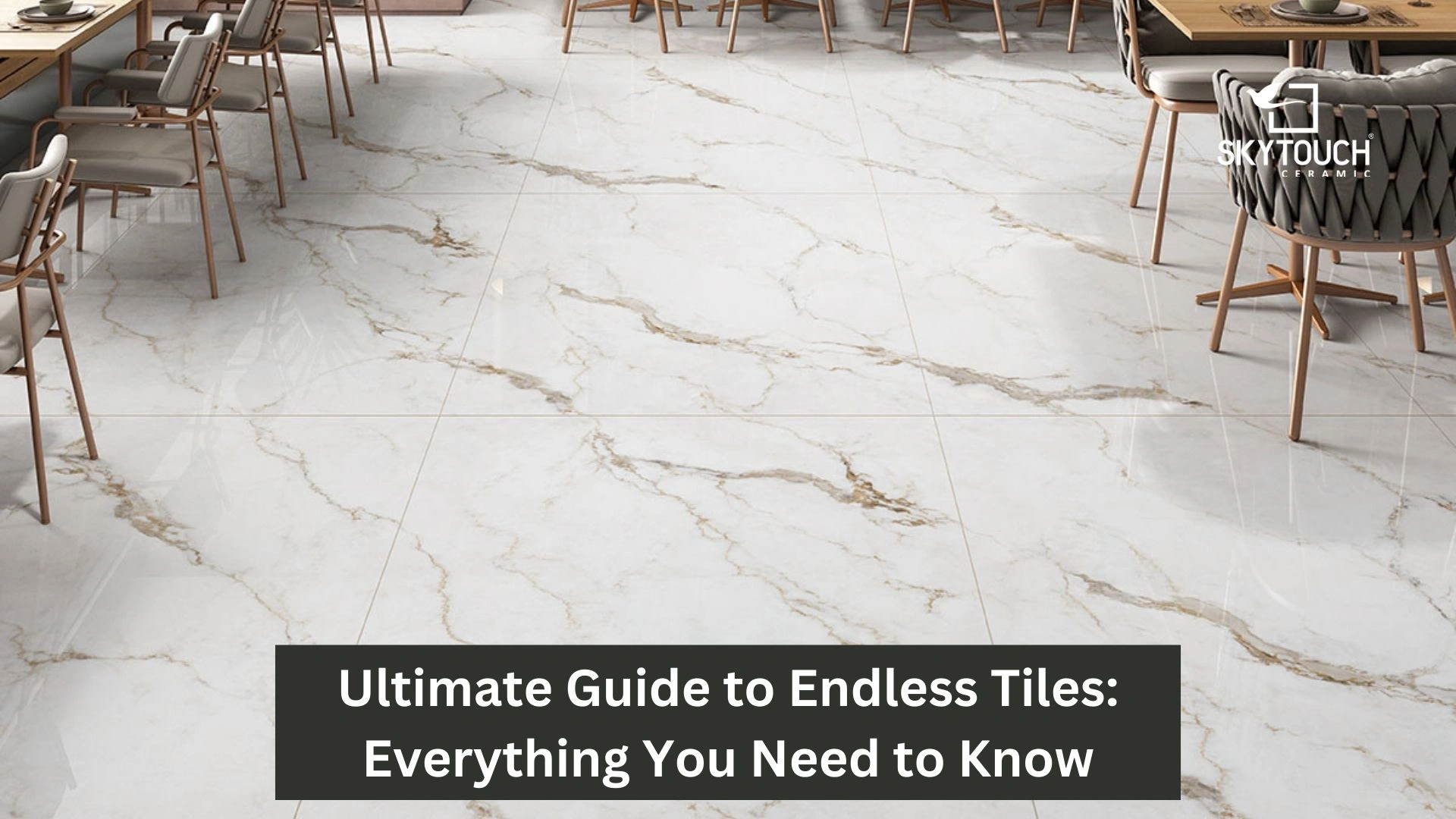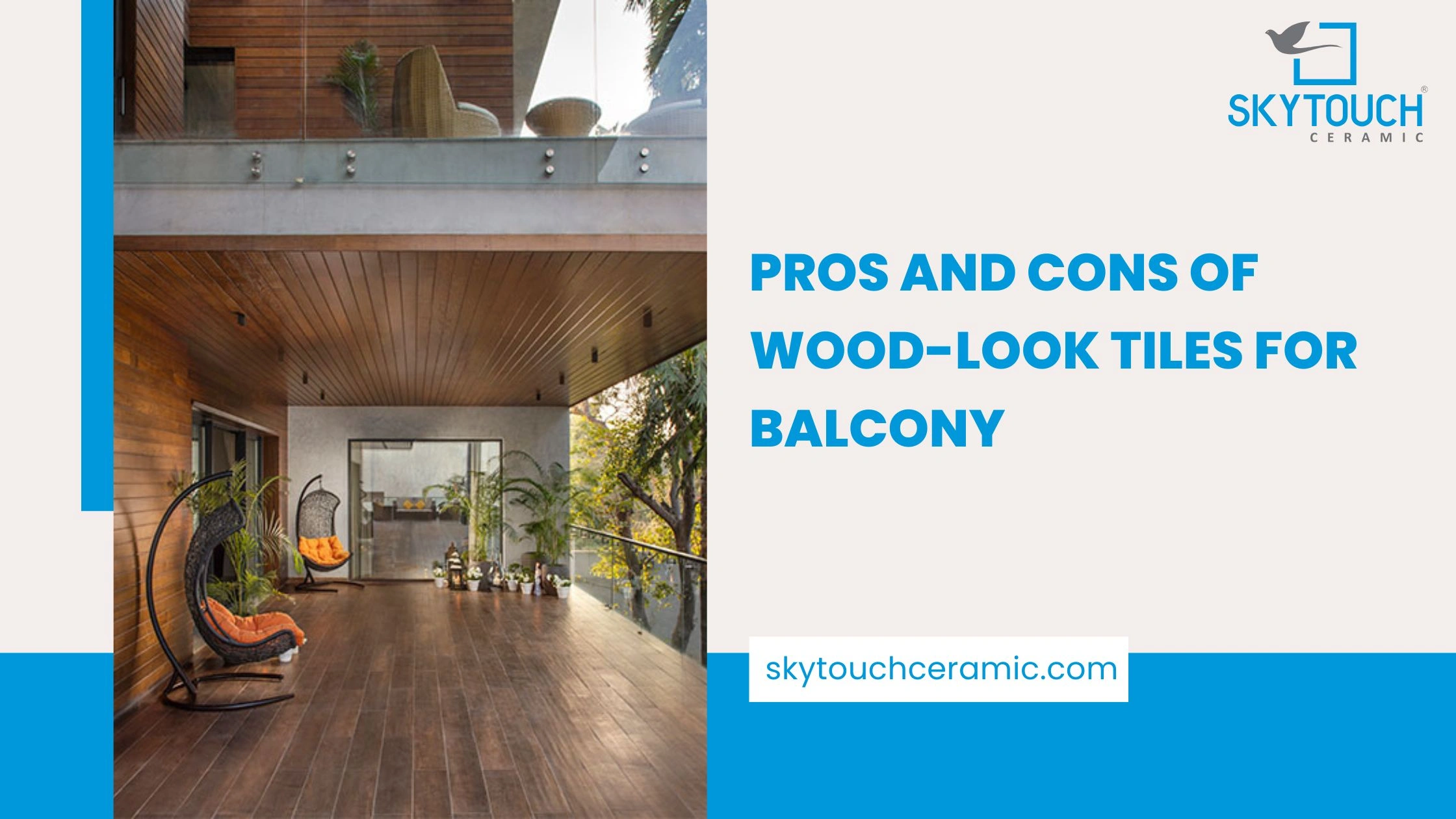Tiles are a popular choice for flooring and wall covering due to their durability, versatility and aesthetic appeal. There are several types of tiles available in the market, each with its own set of characteristics and suitability for various applications. In this article, we will explore the six main types of tiles that are commonly used in residential and commercial properties.
The 6 main Types of Tiles
1. Porcelain Tile
2. Ceramic Tile
3. Vitrified Tile
4. Marble Tile
5. Subway Tile
6. Cement Tile
1. Porcelain Tile
Porcelain tiles are a popular choice for homeowners and designers alike due to their versatility, durability, and aesthetic appeal. These tiles are made from high-quality clay that is fired at extremely high temperatures, resulting in a dense and hard-wearing material that can withstand heavy foot traffic and exposure to the elements.
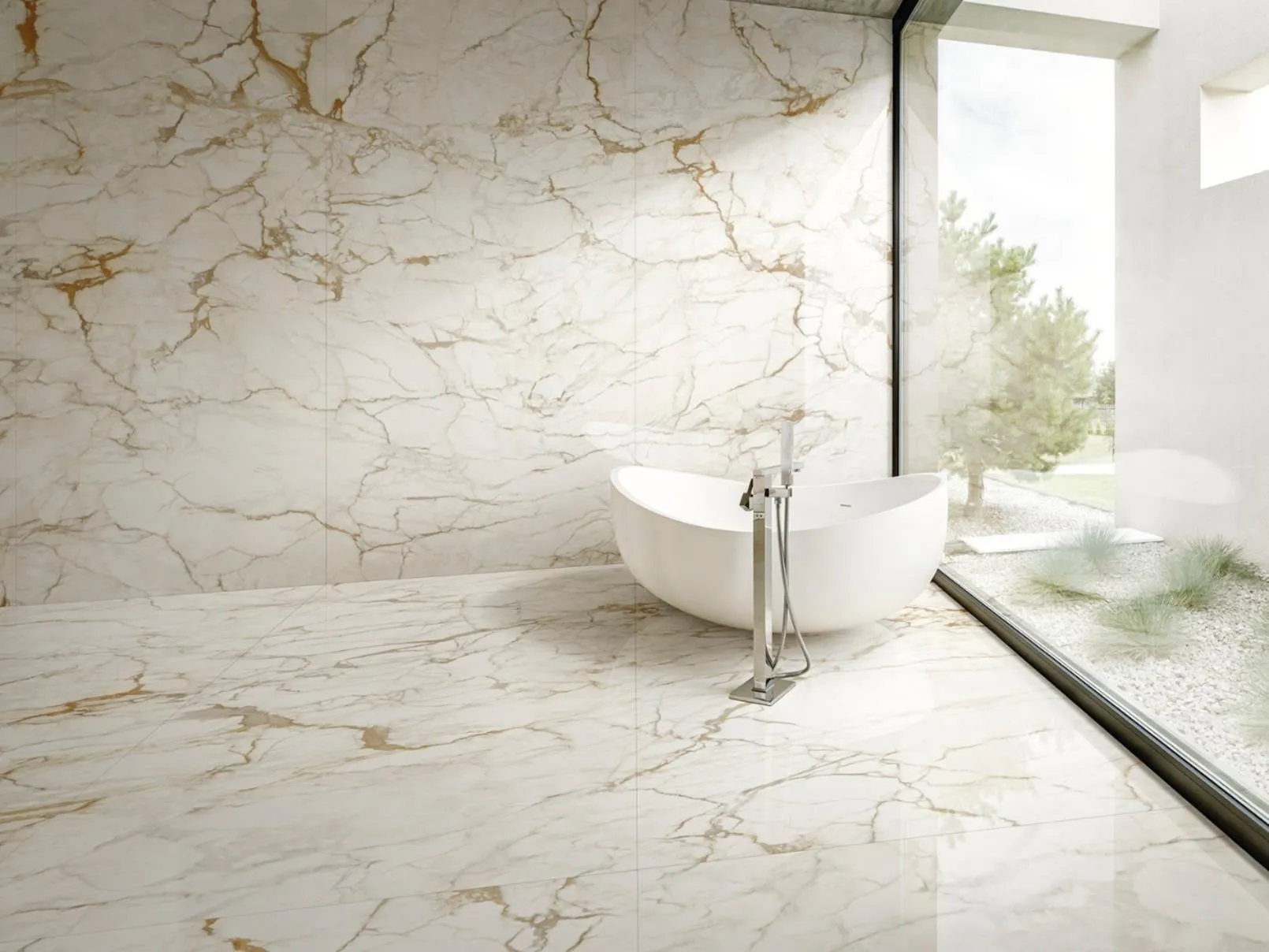
One of the key benefits of porcelain tiles is their resistance to moisture and water damage. This makes them an ideal choice for bathrooms, kitchens, and other areas where spills and splashes are common. Additionally, porcelain tiles are highly resistant to wear and tear, making them a smart choice for high-traffic areas such as hallways and entryways.
Porcelain tiles are available in both glazed and unglazed varieties, with a wide range of colors and textures to choose from. Glazed porcelain tiles have a protective layer of liquid glass that is added during the firing process, which gives them a shiny, reflective finish. Unglazed porcelain tiles, on the other hand, have a more natural, matte appearance that can be especially appealing in rustic or industrial-style interiors.
In addition to their practical benefits, porcelain tiles are also a popular choice for their aesthetic appeal. The range of colors and textures available means that they can be used to create a variety of looks, from sleek and modern to warm and traditional. Porcelain tiles can also be used to create interesting patterns and designs, such as herringbone or chevron layouts, which can add visual interest to any space.
Finally, porcelain tiles are a great investment for homeowners, as they offer excellent value for money over the long term. Their durability and resistance to wear and tear means that they are unlikely to need replacing for many years, making them a smart choice for those looking to create a lasting and stylish home.
Porcelain Tile Maintenance: Do’s & Don’ts
| Do’s | Don’ts |
| Sweep or vacuum daily to remove dirt and debris. | Avoid abrasive cleaners like steel wool or harsh scrubbing pads. |
| Mop weekly with a damp mop and mild detergent. | Do not use acidic cleaners like vinegar, ammonia, or bleach. |
| Use pH-neutral cleaners to protect the tile surface. | Don’t let grime build up, as it can cause stubborn stains. |
| Clean spills immediately to prevent stains. | Avoid excessive water, which can weaken grout and promote mold growth. |
| Use soft tools like microfiber mops and soft-bristle brushes. | Do not drop heavy objects, as they can crack or chip tiles. |
2. Ceramic Tile
Ceramic tile is a versatile and popular choice for flooring and wall covering in homes. Made from a mixture of clay and other natural materials, ceramic tiles are fired at lower temperatures than porcelain tiles. This results in a softer and more porous tile that is available in a wide range of colors, sizes, and patterns.
One of the benefits of ceramic tiles is their affordability. They are a great option for those on a budget who still want stylish and functional flooring or wall covering. Ceramic tiles are also easy to maintain, making them a practical choice for busy households. Regular sweeping and mopping will keep them looking clean and new.
Ceramic tiles are suitable for use in all areas of the home, including high-traffic areas like entryways and kitchens. However, they are not as durable as porcelain tiles and may crack or chip under heavy use. It is important to choose a thicker tile for high-traffic areas to ensure they can withstand the wear and tear of daily use.
Another advantage of ceramic tiles is their versatility. They can be glazed or unglazed, and can be used to create a variety of looks and styles. For example, a glossy glazed tile can create a sleek and modern look, while a matte finish can add a more rustic and natural feel to a space.
When it comes to installation, ceramic tiles can be a DIY project for those with some experience in tiling. However, it is important to ensure the subfloor is properly prepared and leveled before installation. Hiring a professional to install ceramic tiles can ensure the job is done right and will last for years to come.
Overall, ceramic tiles are a great option for those looking for affordable and stylish flooring or wall covering. With a wide range of options available, they can be used to create a variety of looks and styles in any room of the house.
Ceramic Tile Maintenance: Do’s & Don’ts
| Do’s | Don’ts |
| Sweep or vacuum regularly to remove dust and debris. | Avoid abrasive scrubbers like steel wool, which can scratch the surface. |
| Mop with warm water and mild detergent for deep cleaning. | Do not use harsh chemicals like bleach or ammonia, as they can damage the glaze. |
| Use grout sealer to prevent staining and moisture absorption. | Avoid excessive water, which can weaken grout and lead to mold. |
| Clean up spills immediately to prevent stains and residue buildup. | Do not drag heavy furniture directly on the tiles to prevent cracks. |
| Use non-slip mats and rugs in high-traffic areas to reduce wear. | Do not use oil-based cleaners, as they can make tiles slippery and attract dirt. |
3. Vitrified Tile
Vitrified tiles are a type of porcelain tile that is made using a special process that ensures they are highly resistant to stains and scratches. They are also known for their low porosity, which makes them water-resistant and easy to clean. Vitrified tiles are available in a range of colors and textures, and can be used for both indoor and outdoor applications.
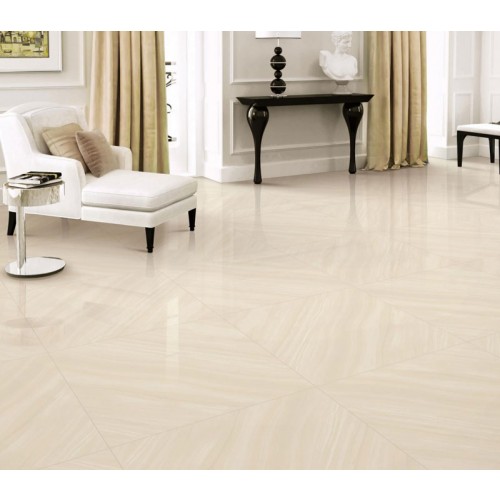
Due to their strength and durability, vitrified tiles are often used in high-traffic areas such as airports, hospitals, and shopping malls, as well as residential spaces such as kitchens and bathrooms.
Vitrified Tile Maintenance: Do’s & Don’ts
| Do’s | Don’ts |
| Sweep or vacuum daily to remove dust and debris. | Avoid abrasive scrubbers like steel wool, which can scratch the surface. |
| Mop with a damp cloth and pH-neutral cleaner for deep cleaning. | Do not use acidic or alkaline cleaners like vinegar, ammonia, or bleach. |
| Wipe spills immediately to prevent stains and maintain shine. | Avoid excessive water, as it can seep into grout and weaken it. |
| Use felt pads under furniture to prevent scratches. | Do not drag heavy furniture directly on the tiles. |
| Polish occasionally with a vitrified tile polish to enhance shine. | Do not use wax or oil-based cleaners, as they can leave residues. |
4. Marble Tile
Marble tiles are a luxurious and elegant option for flooring and wall covering, and are made from natural stone that has been cut and polished to a high shine. They come in a range of colors and patterns, and no two tiles are exactly alike.
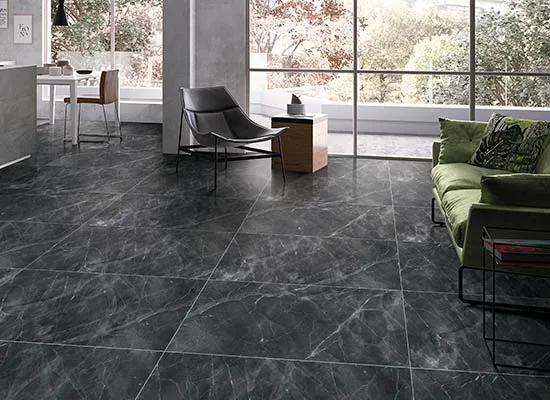
Marble tiles are best suited for low-traffic areas such as bathrooms and bedrooms, as they can be prone to scratching and staining. They also require regular maintenance and sealing to keep them looking their best.
Marble Tile Maintenance: Do’s & Don’ts
| Do’s | Don’ts |
| Sweep or dust daily to prevent scratches from dirt particles. | Avoid acidic cleaners like vinegar, lemon, or ammonia, as they can etch the surface. |
| Clean with a damp mop and pH-neutral stone cleaner. | Do not use harsh chemicals like bleach or strong detergents. |
| Wipe spills immediately to prevent stains, especially from acidic liquids like wine or coffee. | Avoid abrasive scrubbers like steel wool, which can scratch the marble. |
| Seal marble tiles periodically to protect against stains and moisture. | Do not leave marble exposed to water for long, as it can cause discoloration. |
| Use soft pads or mats under furniture to prevent scratches and cracks. | Avoid dragging heavy objects directly on the marble surface. |
5. Subway Tile
Subway tiles are a type of ceramic tile that is characterized by their rectangular shape and beveled edges. They were first used in the early 1900s in the New York subway system, hence the name.
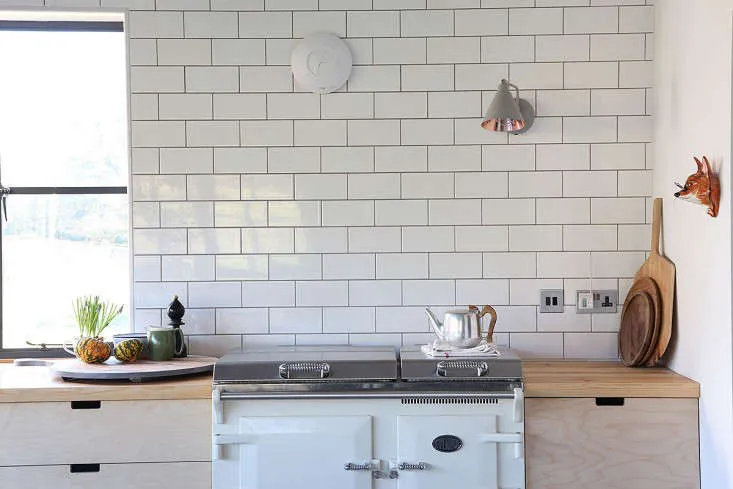
Subway tiles are a popular choice for kitchen backsplashes and bathroom walls, and are available in a range of colors and finishes. They are easy to install and maintain, and their classic, timeless look makes them a versatile choice for any décor. Apart from subway tiles, there are various tile shapes available for different design aesthetics and functionality:
• Square Tiles: A classic shape, commonly used in flooring and walls for a balanced look.
• Rectangular Tiles: Includes subway tiles, ideal for backsplashes and elongated designs.
• Hexagonal Tiles: A trendy choice for modern and geometric patterns, used in both floors and walls.
• Herringbone Tiles: Arranged in a zigzag pattern, perfect for backsplashes, bathrooms, and statement walls.
• Penny Round Tiles: Small, circular tiles that create a retro or mosaic effect, often used in bathrooms and accent walls.
• Chevron Tiles: Similar to herringbone but with clean-cut edges, offering a sleek and dynamic look.
• Fish Scale Tiles: Curved tiles resembling fish scales, popular for bathroom walls and oceanic themes.
• Diamond Tiles: Angular tiles that add a bold and elegant touch to any space.
Subway Tile Maintenance: Do’s & Don’ts
| Do’s | Don’ts |
| Wipe tiles regularly with a damp cloth to remove dust and grime. | Avoid abrasive scrubbers like steel wool, which can scratch the surface. |
| Use a mild detergent or pH-neutral cleaner for deep cleaning. | Do not use harsh chemicals like bleach or ammonia, as they can damage the grout. |
| Clean grout lines frequently with a soft brush to prevent mold buildup. | Avoid excessive moisture, as it can lead to grout discoloration. |
| Seal grout periodically to prevent stains and moisture absorption. | Do not let spills sit for long, especially in kitchen and bathroom areas. |
| Use soft sponges or microfiber cloths for cleaning. | Avoid oil-based cleaners, as they can leave a sticky residue. |
6. Cement Tile
Cement tiles, also known as encaustic tiles, are a type of decorative tile that is made by hand using a mixture of cement, sand, and other natural pigments. They can be used for flooring, wall covering, and even as a decorative element on furniture and countertops.
Cement tiles are distinguished by their bold, graphic patterns and vibrant colors, and can add a unique touch to any interior design project. They are durable and require little maintenance, but may need to be sealed periodically to prevent staining.
Cement Tile Maintenance: Do’s & Don’ts
| Do’s | Don’ts |
| Sweep or vacuum daily to remove dust and debris. | Avoid acidic or harsh cleaners like vinegar, bleach, or ammonia, as they can damage the tile. |
| Clean with a pH-neutral cleaner and a soft mop or cloth. | Do not use abrasive scrubbers like steel wool, which can scratch the surface. |
| Wipe spills immediately to prevent staining and moisture absorption. | Avoid excessive water, as cement tiles are porous and can absorb moisture. |
| Seal tiles regularly to protect against stains, moisture, and wear. | Do not leave tiles unsealed, as they can absorb stains quickly. |
| Use soft pads under furniture to prevent scratches and cracks. | Avoid dragging heavy furniture directly on the tiles. |
Different Tile Types: Durability, Usage, Maintenance & Cost
| Tile Type | Durability | Best For | Maintenance | Price Range |
| Porcelain | High | Bathrooms, Kitchens | Low Maintenance | Medium-High |
| Ceramic | Medium | Living Rooms, Walls | Easy to Clean | Affordable |
| Vitrified | Very High | Commercial Spaces | Stain-Resistant | Medium-High |
| Marble | Medium | Luxury Interiors | Requires Sealing | Expensive |
| Subway | Medium | Backsplashes, Walls | Easy to Maintain | Affordable |
| Cement | High | Feature Walls, Floors | Requires Sealing | Medium |
Conclusion
Choosing the right type of tile for your project can be a daunting task, but by understanding the characteristics and suitability of each type, you can make an informed decision that will meet your needs and budget. Whether you opt for the durability of porcelain tiles, the elegance of marble tiles, or the charm of encaustic tiles, you can be sure that you are making an investment in your home that will last for years to come.
For more information contact us at info@skytouchceramic.com / +91 70466 90088

